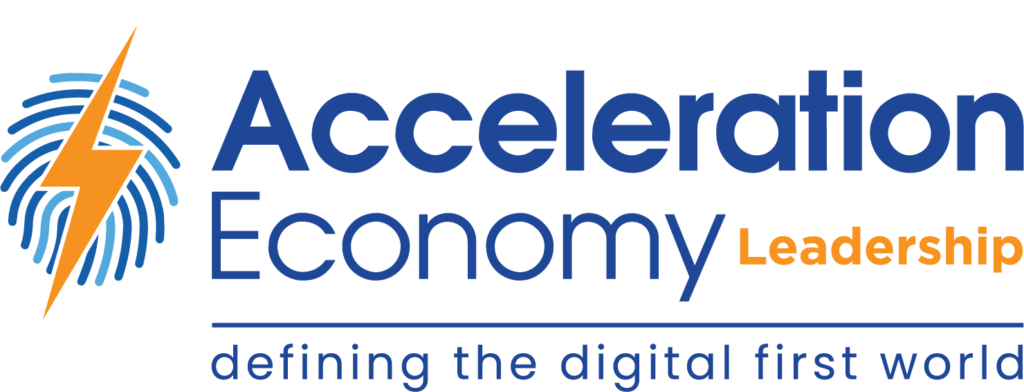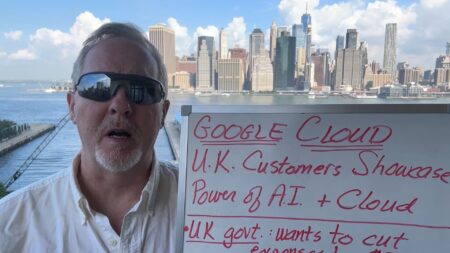In this Acceleration Economy Growth Swarm, John Siefert, Bob Evans, Tony Uphoff, and Scott Vaughan have a conversation about the concept of time from the executive perspective.
Highlights
01:39 — Although the term ‘digital transformation‘ has been excessively used over the past few years, its concept is valid. When companies come through the transformation, they are quite different, one of the new priorities from the transformation outcome being culture. Business leaders are doing things in an entirely new way, such as not getting tapped into the tyranny of a schedule and managing with presence, involvement, and engagement.
02:49 — It becomes incumbent upon leaders to recognize when things become flimsy—such as using a schedule as an excuse—and acting on them rather than becoming victims of them.
03:17 — How do executives maximize the time they invest in their organizations? Culture is an important part of moving away from environments where you have back-to-back schedules. Executives need to lead by example, establish guidelines, and talk about what has to change. Additionally, proactively offering resources about time management can help shift this culture.
05:54 — Another way executives can maximize their time is by blocking out time to walk around and engage with people in a meaningful way. In a virtual, work-from-anywhere world, how do you keep the concept of the ‘sneaker-net’ alive in your culture?
07:07 — There has been a false level of productivity in the earlier days of remote work. So, there is a great need to return to time management—not because time management is a new concept, but because how we manage time is being disrupted by technology. Reflect on the level of productivity and impact that you have with meetings to determine if you have led yourself into a false satisfaction with your work day.
08:35 — Be intentional when looking at your daily and weekly schedules, then make adjustments where it’s necessary—could this really be just an email? Also, have a looser agenda for calls. Making them ‘touch-base’ calls can help people become looser in their way of thinking—that’s where good ideas come from.
10:23 — At the end of the day, culture is about how the work gets done in a company. We have the ability to challenge each other to determine what’s actually productive.
12:03 — The future is coming at us faster than ever before. In a more deliberate time, we could afford to have more meetings. However, today’s leaders and organizations have to get foster a culture where people feel empowered, be involved, and build to the pace of an accelerating economy.
13:43 — An activity spectrum evaluates where you fall in terms of being reactive, active, and proactive. It encourages professionals to reflect on where they fall on this spectrum and determine how they prioritize their day-to-day responsibilities.
- Reactive is when you are responding to something else.
- Active is when you are collaborating with somebody.
- Proactive is when you take the time to think about where things are going, why they’re going in that direction, what you can do about it, and how you can impact those things.
15:05 — By building targets off of the activity spectrum, business leaders can better determine how they are going to lead by example and prioritize their time.
16:04 — In the book ‘The 7 Habits of Highly Effective People,’ author Stephen Covey wrote about visualizing four quadrants of a time management matrix. Part of being in a senior executive position may be creating an environment to enable people to make time management decisions.
17:25 — There could be a broader theme of providing people with ‘flex time,’ proactively ensuring your organization provides a culture of safety for people to redefine time management for themselves.
18:00 — Further providing balance, apps and planners can be useful tools to help people have visibility and map out their activity.
19:26 — How do you differentiate between activity and progress inside your day?
21:02 — Every leader has to identify its ‘north star’— the mission, vision, values, and culture have to be set. This compass will guide the empowerment of your organization. Leaders should also make the conversation about key initiatives visible. There needs to be constant communication and updates about company priorities.
22:50 — Something that can help stimulate these outcomes is letting people see what’s going on end-to-end and get their ideas and input. It unleashes an opportunity for people to think about how they can contribute.
24:05 — It can be nice to go out of your swim lane and see what’s going on everywhere else, then let others know what’s happening in your lane. This can allow people to understand what priorities mean within the context of other roles within the business, too.
25:38 — Why don’t we start to focus on customers and users? Additionally, one-on-ones with a senior executive may not be as productive as prioritizing time to collaborate with peers. Who do you need to work with to achieve the defined priorities?
28:15 — Hosting open-door meetings can open opportunities for everyone to collaborate according to the priorities, as well. This is another way that executives need to be leading by example and model this with their own behavior.
Want more tech insights for the top execs? Visit the Leadership channel:









